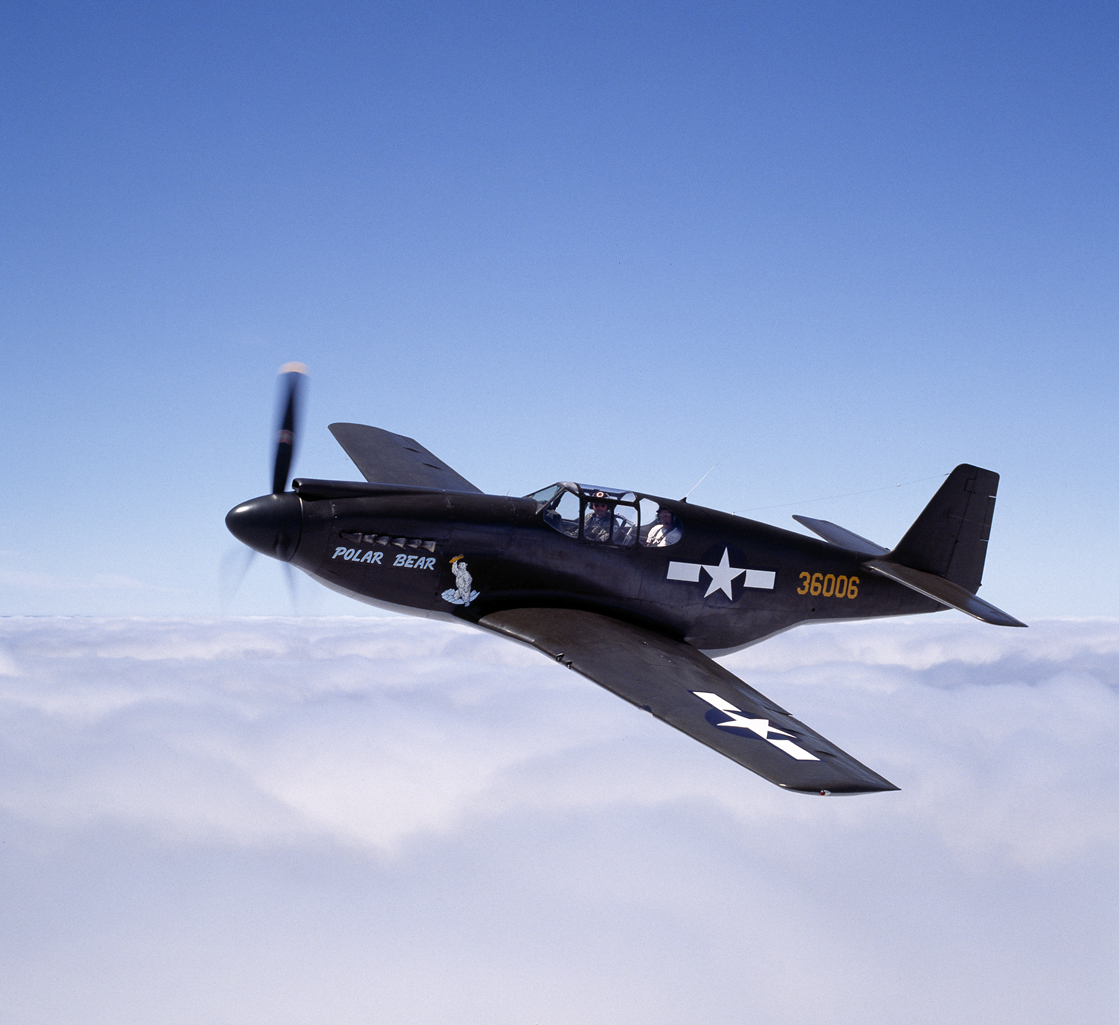North American P-51A
One of the most important fighters of WWII was the North American P-51 Mustang. It is not commonly known, but the P-51, although designed and built in the USA, owes its existence to a British Purchasing Commission request for a more advanced fighter than the Spitfire and Hurricane. The design of the wing, in particular, helped reduce drag and improve the aircraft’s range. Initially the aircraft used an American designed Allison engine and was known as the P-51A of which this photograph is an example.
Performance in RAF service was disappointing. The engine had a single-stage compressor and power output fell off above about 16,000 feet which meant that it could not climb up to meet the incoming Bf109s of the Luftwaffe and it was at a serious disadvantage. Then someone asked a very simple question … ‘what would happen if we put a Rolls Royce Merlin into the aircraft?’
This was done with amazing speed and the result was the greatest escort fighter of the Second World War. The P-51D variant could fly all the way to Berlin and back escorting the B-17s, participate in aerial combat with the Luftwaffe over the target and still have sufficient fuel for the journey home, often taking part in a little bit of train-busting at low level.
The aircraft shown here is one of those early P-51As. It never saw wartime service as it crashed on top of a mountain in Alaska before the USA entered the war; the pilot was rescued but the aircraft remained there for many years until recovered from the ice by Jerry Gabe and restored to flying condition. It is seen here over Northern California shortly after its return to flight.
